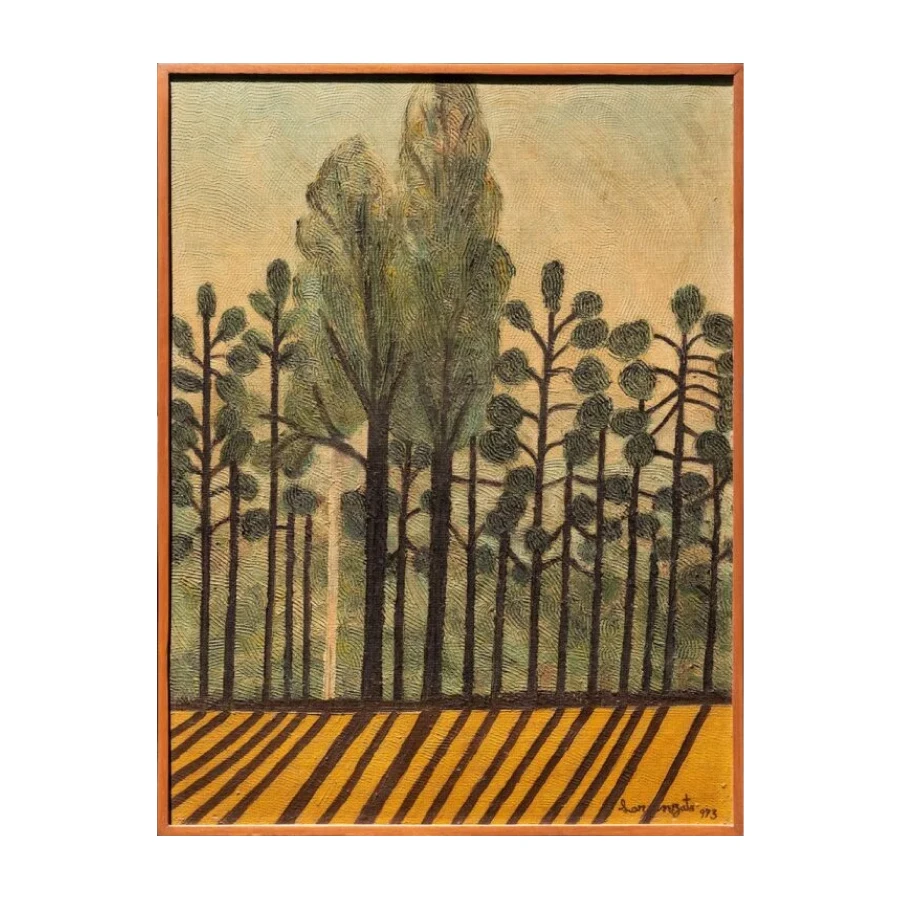Despite briefly studying at the Reale Accademia delle Arti in Vicenza, Italy, in 1925, Lorenzato was mainly self-taught. He improved his painting skills by working various jobs as a mural painter in Brazil and later as a fresco restorer in Rome. Lorenzato self-educated on art history, favoring Cimabue and Italian Renaissance painters like Masaccio, Leonardo da Vinci, and Michelangelo.
Lorenzato lived in Brazil most of his life, but also extensively traveled Europe from 1920 to 1948. In 1927, Lorenzato met the Dutch painter Cornelius Keesman and they embarked on a yearlong cycling trip across Eastern Europe, creating and selling small gouache works. In 1948, he settled back in Belo Horizonte where he lived and worked until his death in 1995.
Following a leg injury in 1956, Lorenzato dedicated himself to painting. He had his first two group exhibitions in Belo Horizonte in 1965, followed by his first solo presentation at the Minas Tênis Clube in 1967 at the age of 67. His work has been displayed in solo and group exhibitions in Brazil, including a retrospective in 1995 at the Museu de Arte da Pampulha, Belo Horizonte. In 1971, the artist represented Brazil in the 3rd Triennale of Bratislava.
Amadeo Luciano Lorenzato, hailed as the seminal artist of his generation, created a unique body of paintings inspired by his meticulous observations of everyday life in Belo Horizonte, Brazil. His goal was not to replicate his surroundings, but to translate them into simplified forms with rich pigments and defined brush strokes. Lorenzato viewed painting as an everyday activity, an extension of himself, and a “form of spiritual survival”.
Public Collections
Fundação Clóvis Salgado, Pampulha Museum of Art in Belo Horizonte Federal University of Viçosa, Pinacoteca de São Paulo, MASP Museu de Arte de São Paulo Assis Chateaubriand.




